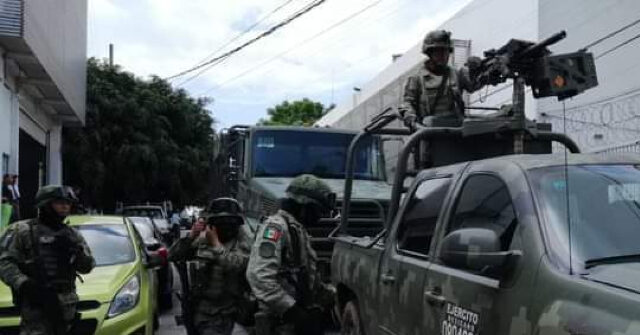This week, a significant confrontation unfolded in Sinaloa, Mexico, where Mexican Army soldiers engaged in a lethal shootout with cartel gunmen, resulting in the death of 19 gunmen and the arrest of a local crime boss. The conflict underscores the intensifying violence in the region, which has become infamous for its ongoing turf war between rival factions of the Sinaloa Cartel. This power struggle has resulted in numerous murders and forced disappearances, destabilizing the community and raising concerns about public safety. The military clash occurred approximately six miles east of Culiacan, during an operation directed at apprehending cartel members, which encountered fierce resistance from a group of over 30 armed gunmen.
In the melee, a significant outcome was the capture of Edwin Antonio “El Max” Rubio Lopez, identified as a cell leader aligned with the faction loyal to imprisoned cartel kingpin Ismael “El Mayo” Zambada. Authorities state that El Max plays a crucial role within his faction, orchestrating operations in the ongoing conflict against the rival faction led by the Chapitos. This group is affiliated with the sons of the notorious drug lord Joaquín “El Chapo” Guzmán. The military’s success in seizing high-caliber weaponry and equipment, including mounted machine guns, rifles, and vehicles, reflects the ongoing militarization of cartel activity and the severity of the violence in the region.
The circumstances leading to this brutal shootout are rooted in complex inter-cartel dynamics. A betrayal perceived by the Los Chapitos faction against El Mayo notably escalated tensions, particularly after an incident on July 25, when they purportedly lured El Mayo into a meeting only to apprehend him and extradite him to the U.S. This act of treachery precipitated a series of violent confrontations, with each faction vying for control and territory in Sinaloa, which has historically been the heartland of drug trafficking in Mexico. The existence of two powerful factions clashing for dominance has led to a landscape marked by violence, making it perilous for both law enforcement and civilians alike.
The ramifications of the expanded turf war are grim, as entire communities in Sinaloa grapple with the consequences. Reports of forced disappearances and murders attributed to cartel violence have surged, creating an atmosphere of pervasive fear among residents. The Mexican government has struggled with the challenging task of restoring order amidst these rampant power struggles, which involve not just violent confrontations but also corruption and complicity at various levels of law enforcement. As continued confrontations disrupt everyday life, the military’s role in combating cartel violence has become increasingly critical.
Amid these developments, the credibility and stability of both the military and civilian authorities are under constant scrutiny. The performance of state forces like the Mexican Army in confrontations such as the recent shootout may influence public perception, which oscillates between approval and skepticism regarding the effectiveness of military intervention against potent drug cartels. The necessity of a comprehensive strategy that addresses the roots of cartel violence—ranging from socioeconomic factors to judicial ineptitudes—has become a prominent talking point among analysts and policymakers.
The grim landscape of violence in Sinaloa cries out for a multidimensional solution involving community engagement, socio-economic support, and the fortification of judicial processes. As the tension between rival factions of the Sinaloa Cartel continues to escalate, the need for effective governance and crisis intervention has never been more critical. The battle lines drawn in this ongoing conflict not only affect the immediate actors involved—security forces and cartel members—but also encroach upon the daily lives of civilians who seek safety and stability in a region fraught with danger and uncertainty. As journalists like Ildefonso Ortiz and Brandon Darby continue to report on this volatile situation through their work with Breitbart Texas, the urgency for long-lasting solutions becomes ever more apparent.

